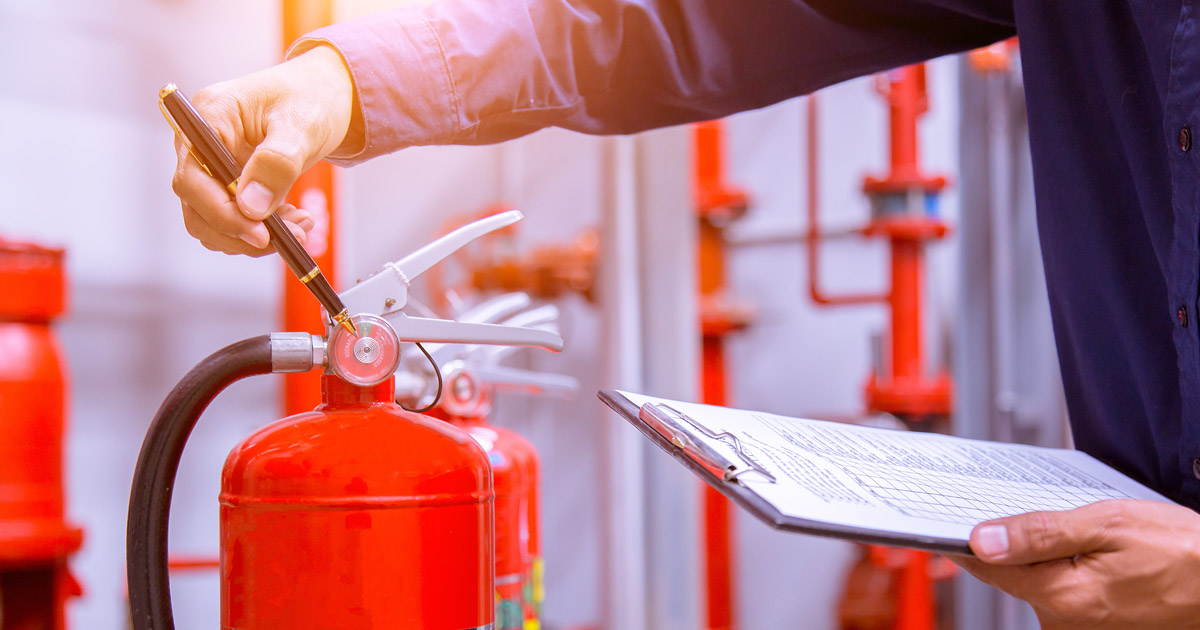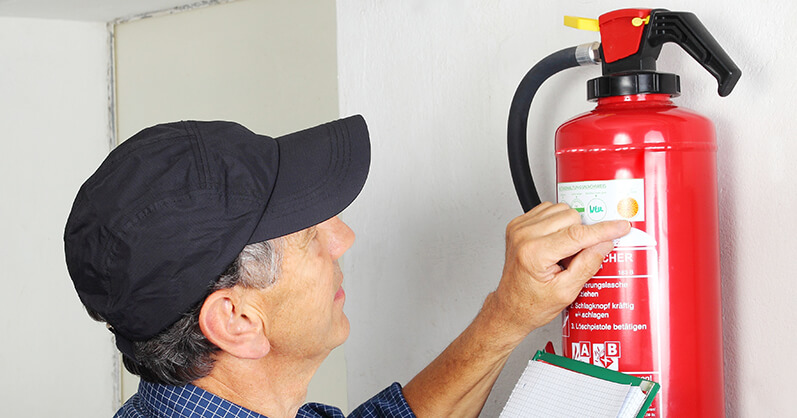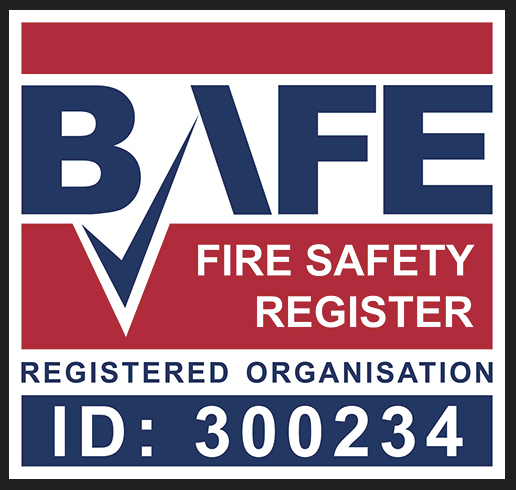Industry Articles

Fire Safety Maintenance
The umbrella legislation, Regulatory Reform (Fire Safety) Order 2005, lays out the regulations surrounding fire safety and necessary equipment for non-domestic premises in England and Wales. It tells us that businesses and commercial places need a Responsible Person (RP) to take care of Fire Safety, notably to organise Fire Emergency Exit Plans and Fire Risk Assessments.
Keeping your fire maintenance equipment in good condition is another important responsibility. After all, there’s not much use having the equipment if it doesn’t work when needed most. It’s not enough to simply have the equipment on site.
What is Fire Safety Equipment?
Fire Safety Equipment covers the tools, devices, facilities and various elements on your premises that contribute to fire protection and prevention, allowing you to meet safety standards. This includes but isn’t limited to:
- Fire Alarms
- Fire Doors
- Fire Extinguishers
- Emergency Lighting
- Sprinkler Systems
- Fire Blankets
- Fire Hose Reels
- Signage
- Safety Torches
Depending on size and type of the premises, not every building will require all of the above, but whatever you do own needs to be maintained.
What is Fire Equipment Maintenance?
Any element of fire safety provided on your premises should be maintained and serviced to ensure it is in working order. It is essential to carry out these checks, not just to meet legislational standards and save money, but to protect the wellbeing of your employees and visitors too.
It is best to keep all equipment regularly serviced rather than leave it until it is too late, which can generate more costs in repairs and replacements.
The regulations are sometimes hard to follow and aren’t always laid out as clear instructions, but rather given as guidance.
The RP can carry out routine testing and upkeep of fire safety equipment whereas further maintenance such as more in-depth system checks should be executed by a competent person.
You should have a Fire Log Book where all records, updates and progress relating to your onsite fire safety can be logged. The RP should organise all necessary maintenance and tests and ensure they are recorded in the Fire Log Book.
Although there is no one rule, there are a number of recommendations given by British Safety Standards and the Regulatory Reform (Fire Safety) 2005. An example of an effective fire equipment maintenance schedule would be:
- A Daily Check of final exit doors and exit routes to make sure they are clear and unbolted at the beginning of each day, check the emergency lighting is on and visible as well as completing a visual check of the fire alarm panel.
- A Weekly Check of the fire alarm (see our video at the bottom of this post).
- A Monthly Check and testing of safety torches and emergency lighting systems, and visual inspection of the fire extinguishers. A monthly check of the fire doors is also recommended.
SEE MORE FIRE PROTECTION VIDEOS
Fire Extinguisher Maintenance: How often?
The British Standard BS5306:3 2017 gives detailed guidance and recommendations on the best practice for installation, service and maintenance of fire extinguishers. It is recommended to carry out maintenance on fire extinguishers at least once a year.
What is Fire Extinguisher Maintenance?
Fire extinguishers should be checked annually, to make sure they are in good working condition should they need to be used. They should be tested by a competent person. This is someone who has sufficient training, experience or knowledge to carry out the maintenance. Fire protection and prevention companies will provide these services. At DFP we offer comprehensive Fire Safety Maintenance programmes and have several unique cost management strategies for accurate budgeting as well as different packages to suit our clients’ needs. All our engineers are third party examined and accredited by BAFE.
Fire extinguisher maintenance will cover several things to check:
- The fire extinguisher is in date
- The weight and pressure are correct
- If it’s been tampered with
- That the pin and hose work correctly
- That the instructions are legible
- That the extinguisher is in visibly good condition
The engineer will be able to advise you on any further necessary action once the service is complete. You may be advised to replace an old or faulty extinguisher or to purchase additional extinguishers to help you comply with safety standards.
This service should be logged in the Log Book, but you will also receive a service label proving the service has been done. This is important for Fire Safety Inspections.
It is down to the RP to ensure that extinguishers are not obstructed and are ready to use at all times.

LEARN MORE ABOUT CHECKING FIRE EXTINGUISHERS
How often should portable fire extinguishers be removed from service for maintenance?
After 5 years an extended service will be carried out to the extinguisher’s discharge levels.
For CO2 fire extinguishers, this is done every 10 years when they are sent away to be tested, refilled and resealed. The Extended Services can come with extra costs, so it is sometimes recommended to weigh out the costs of simply replacing older extinguishers with newer, more efficient ones.
How to Maintain a Fire Alarm System
BS 5839-1 covers the code of practice for design, installation, commissioning and maintenance of fire detection and alarm systems in non-domestic premises. There are no strict guidelines, but the safety standard and the government recommend that fire alarm systems are serviced at least every 6 months. In larger premises, it may be advisory to service these quarterly as the fire alarm system may be more sophisticated and contain more components.
The Safety Standard states the three main reasons for the fire alarm maintenance and testing as:
- To identify any faults signalled and take the appropriate action to rectify them;
- To ensure there have been no major failures of the system, either as a whole or in part;
- To familiarise occupants of the building with the fire alarm signal(s).
A competent person or company should install and service fire alarm systems. However, it is recommended to perform a weekly test of fire alarms yourself to ensure they are working. We have put together our best tips on a fire alarm checking system, which can be seen below:
HOW TO CHECK YOUR FIRE ALARM
What is a Fire Policy Schedule?
Under the Regulatory Reform (Fire Safety) Order, every business should have a Fire Safety Policy. It will include several sections covering the general fire safety policy in place, the RP and their duties, the trained fire marshals, communication methods, training that has been taken out, equipment and testing methods, general procedures, and records of main events relating to fire safety on the premises.
It is intended as a document that demonstrates commitment to fire safety and outlines all the measures taken by a company.
Summary
We hope your fire safety equipment never has to be put to the test, but it is definitely better to be safe in the knowledge that if it does have to be used, it will function with no problem.
DFP offers a variety of fire prevention and protection services, to ensure your business complies with national safety standards. We can provide you with a range of planned, preventative maintenance packages carried out by qualified, friendly engineers. Preparation is key!
If you’d like more information, feel free to contact us by phone on 0330 7000 555 or by email. We are located in the heart of Dorset, and are primed and ready to answer your calls Monday – Friday, 8am-4.30pm.
This article was written by Gary Askew, Managing Director of Dorset Fire Protection.
He has over 20 years experience of supplying fire prevention measures and finding premium solutions.

Follow Gary on LinkedIn
Follow DFP on LinkedIn
Follow DFP on Facebook





